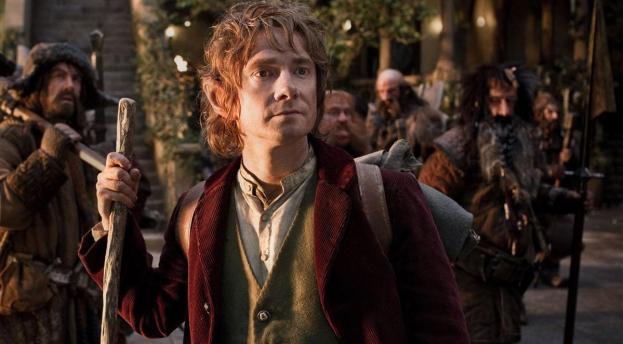 After easily cruising to a cool billion dollars at the box office in just over three months, Peter Jackson’s fourth film in the increasingly inaccurately named Lord of the Rings Trilogy is being released today on home media. And while the new addition to the franchise doesn’t quite reach the heights of the original three, it does a respectable job of cutting its own swath in the fertile grass of Middle-earth.
After easily cruising to a cool billion dollars at the box office in just over three months, Peter Jackson’s fourth film in the increasingly inaccurately named Lord of the Rings Trilogy is being released today on home media. And while the new addition to the franchise doesn’t quite reach the heights of the original three, it does a respectable job of cutting its own swath in the fertile grass of Middle-earth.

To celebrate the arrival of the movie on DVD, Blu-Ray, streaming, as a downloadable file, possibly on VHS, and any other form of home media you can possibly imagine, we have assembled a few facts about the film that you might not know.
Here are 10 things you might now know about The Hobbit: An Unexpected Journey:

2. The Hobbit: An Unexpected Journey earned a notable place in cinematic history for being the first feature-length movie to be shot and screened at 48 frames-per-second. This filming speed is twice the current industry standard (24 frames-per-second), and was used to create smoother, more fluid action and improve the visual effect of viewing the movie in 3-D. The end result is that some people loved it, some people hated it.

4. If you’ve ever wondered what happened in Middle-Earth prior to The Hobbit or during the period between The Hobbit and The Lord of the Rings, a pair of critically praised fan films have explored those two periods in Tolkien’s mythology. Born of Hope and The Hunt For Gollum are both based on Tolkien’s notes and his posthumously published Middle-Earth chronology, The Silmarillion.
5. “Gandalf” wasn’t always the name of the wandering wizard in The Hobbit and The Lord of the Rings. In early drafts of The Hobbit, Tolkien named the mysterious wizard “Bladorthin,” and gave the name “Gandalf” to the leader of the dwarves, who was later renamed “Thorin Oakenshield.”

7. Peter Jackson’s The Lord of the Rings trilogy wasn’t the first adaptation of Tolkien’s work to earn significant praise on the awards circuit. The 1977 animated feature based on The Hobbit finished second to Star Wars in the prestigious Hugo Awards’ “Best Dramatic Feature” category. The project also earned writer Romeo Muller a Peabody Award.

8. If you’re wondering where Tolkien came up with many of The Hobbit characters’ names, quite a few of them were borrowed from “Poetic Edda,” a Norse poem dating back to the 13th century that featured characters with the names of 11 of the dwarves from The Hobbit, as well as a character named “Gandalf.”
9. The families of several elf and dwarf characters from The Lord of the Rings trilogy play a significant role in The Hobbit, with some appearing (or referenced) in both series. Gimli, the dwarf who accompanies the fellowship in The Lord of the Rings trilogy, is the son of Gloin (pictured right), one of the dwarves who accompanies Bilbo in The Hobbit. Another dwarf from The Hobbit, Balin, is mentioned in The Lord of the Rings when the fellowship discovers his tomb in the Mines of Moria. In addition to the dwarves, Thranduil (pictured right), the king of the Mirkwood elves who chooses not to battle Smaug at the beginning of The Hobbit is the father of Legolas, the elven ranger from The Lord of the Rings.

10. The Hobbit: An Unexpected Journey isn’t the first live-action film based on Tolkien’s novel. A 1985 Russian movie titled “The Fabulous Journey of Mr. Bilbo Baggins the Hobbit” holds that honor. The film was directed by Vladimir Latyshev and featured dancers from the Leningrad State Academic Opera and Ballet Theatre playing many of the goblins and human characters.



